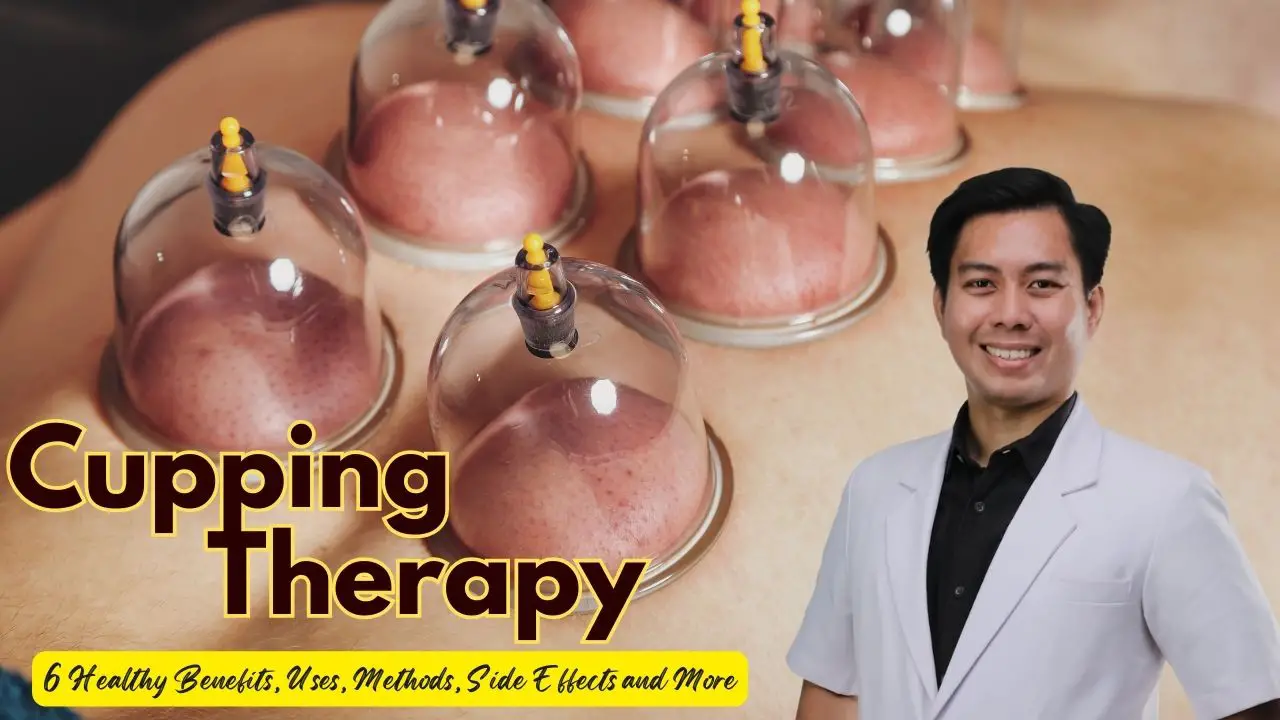Cupping therapy, also known as cupping, is an alternative therapy that has been in practice for centuries and is based on the belief that certain health problems can be alleviated by creating suction on the skin’s surface. This practice involves placing cups, typically made of glass, bamboo, or silicone, on the skin and creating a vacuum to draw the skin and underlying tissues into the cup. While it might seem unconventional to some, cupping therapy has gained popularity in recent years, and for good reason.
- Introduction to Cupping Therapy
- Historical Context
- Variety of Cupping Instruments
- Cupping Methods
- Health Benefits of Cupping
- Cupping for Pain Relief
- Cupping for Skin Health
- Cupping and Blood Circulation
- Detoxification with Cupping Therapy
- Cupping and Stress Reduction
- Cupping for Respiratory Health
- Combining Cupping with Other Therapies
- Safety and Side Effects
- Cupping Therapy: Who Should Avoid It
- Cupping Across Cultures
- Research and Scientific Evidence
- Getting Started with Cupping
- The Experience of Cupping
- Myths and Misconceptions About Cupping
- Embracing the Therapeutic Potential of Cupping
- Conclusion:
- Frequently Asked Questions (FAQs):
Cupping Therapy Treatment | What the Wellness | Well+Good
Introduction to Cupping Therapy
Understanding the Origins
The origins of cupping therapy can be traced back to ancient civilizations, with records of its practice dating as far back as 1550 BC in Egypt and even earlier in China. The concept of cupping was rooted in the belief that the body’s vital energy, known as “qi” in traditional Chinese medicine, could be balanced and improved through the manipulation of the body’s energy pathways. This therapy has evolved over time and has been influenced by various cultures and traditions.
Types of Cupping Techniques
Cupping therapy has evolved to include various techniques, with the most common being dry cupping, wet cupping, and fire cupping. Dry cupping involves creating suction without any incisions, while wet cupping includes a controlled release of blood to promote detoxification. Fire cupping, on the other hand, involves the use of fire to create a vacuum inside the cup.
How Cupping Works
Cupping works on the principle of negative pressure, where the cups create a suction that draws the skin and underlying tissues upwards. This suction effect promotes blood flow and can help alleviate muscle tension and pain. The cups are typically left in place for a few minutes, and the therapist may move them around to target specific areas of concern.
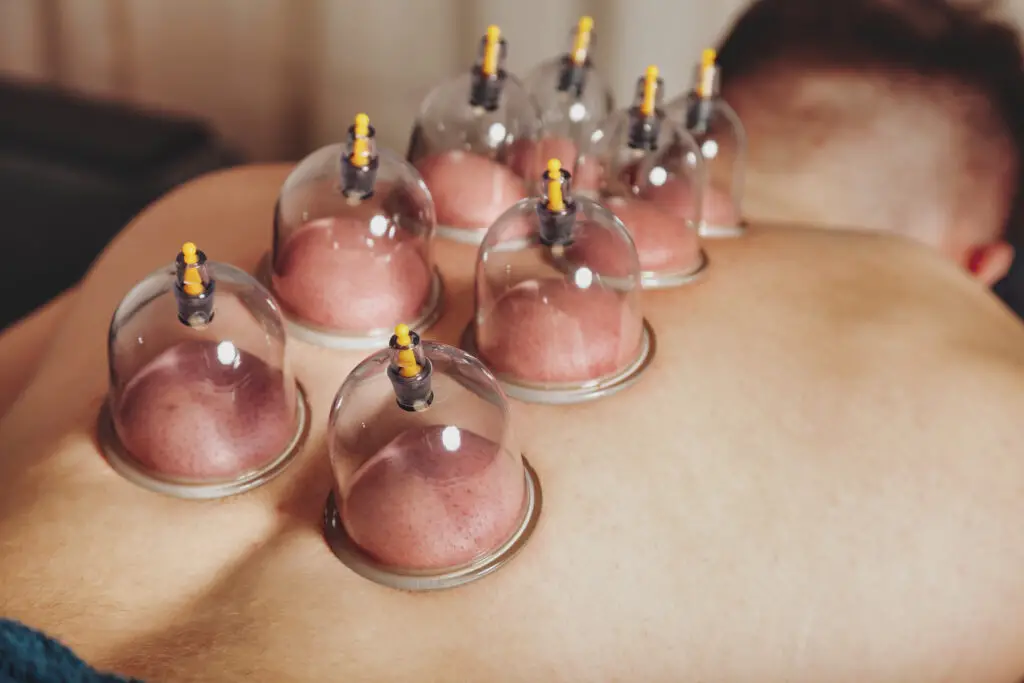
Historical Context
Ancient Practices
Cupping therapy has a rich history that extends across various ancient cultures, including Egyptian, Chinese, and Middle Eastern civilizations. The practice was rooted in the belief that it could help balance the body’s vital energy and promote overall well-being. Historical accounts show that cupping was often used to treat a wide range of ailments.
Cultural Significance
In many cultures, cupping held a significant place in traditional medicine. It was not only a therapeutic practice but also a cultural and spiritual one. The symbolism and rituals associated with cupping varied from one culture to another, reflecting the diverse interpretations of its benefits.
Evolution of Cupping Therapy
Over the centuries, cupping therapy has evolved from its ancient roots to incorporate modern techniques and equipment. While the core principles of creating suction and promoting blood circulation remain the same, contemporary cupping offers a more refined and controlled approach to treatment.
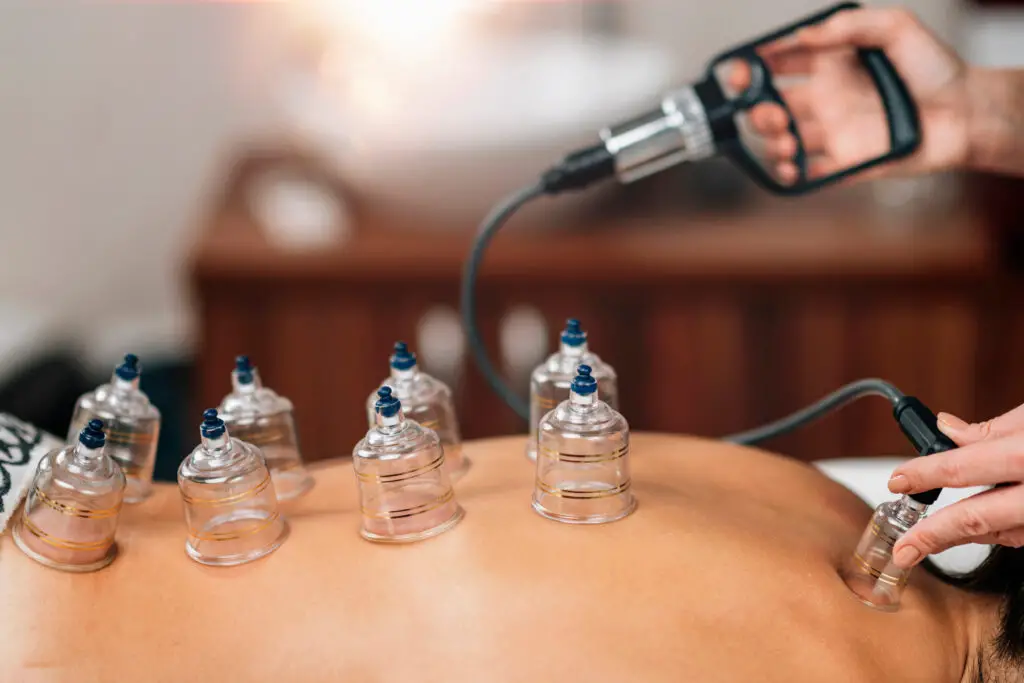
Variety of Cupping Instruments
Traditional Glass Cups
The use of glass cups is perhaps the most iconic image of cupping therapy. Traditional glass cups are heated briefly and then placed on the skin, creating a vacuum as they cool down. These cups come in various sizes and shapes to accommodate different body areas.
Silicone Cups
Silicone cups have become increasingly popular because of their flexibility and user-friendly nature. They are typically soft and pliable, allowing for better control over the amount of suction. Silicone cups are also a great choice for self-administered cupping.
Plastic Cups
Plastic cups are often used in contemporary cupping therapy. They are lightweight, durable, and easy to clean, making them a convenient choice for practitioners. These cups are also available in various sizes and are often transparent, allowing for a clear view of the skin.
Cupping Methods
Dry Cupping
Dry cupping, as the name suggests, involves creating suction without the use of any liquids or incisions. The therapist places the cups on the skin and removes the air to create a vacuum. This method is widely used to alleviate muscle pain and promote relaxation.
Wet Cupping
Wet cupping, also known as hijama, is a form of cupping that involves making small incisions on the skin before applying the cups. The controlled release of blood is believed to help remove toxins and promote overall health. Wet cupping should be conducted exclusively by professionals who have received proper training.
Fire Cupping
Fire cupping is a traditional method where a flame is briefly introduced to the interior of the cup to heat the air inside. Afterward, the cup is swiftly positioned onto the skin. The cooling air creates a vacuum, drawing the skin into the cup. Fire cupping is known for its soothing and warming effect.
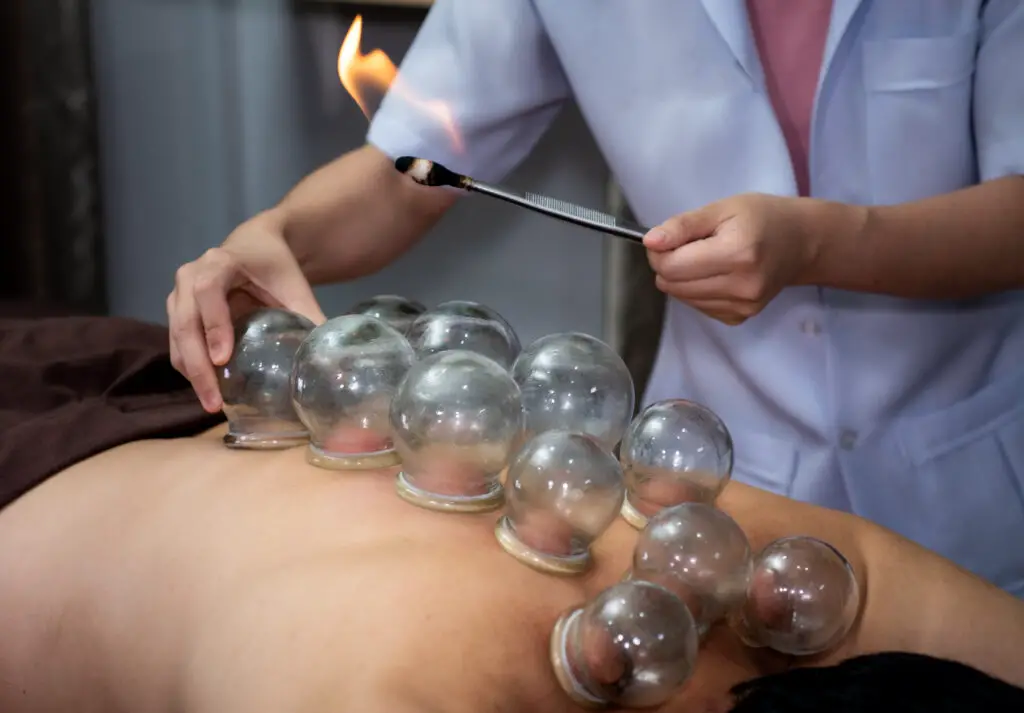
Health Benefits of Cupping
Cupping therapy offers a wide range of health benefits, making it a versatile and holistic approach to wellness. Let’s explore some of the most notable advantages of this ancient practice.
Pain Management
One of the most well-known benefits of cupping therapy is its ability to manage and alleviate pain. The suction created by the cups helps to improve blood flow to the targeted area, reducing muscle tension and promoting healing. Cupping is often used to address conditions like back pain, neck pain, and muscle soreness.
Improved Blood Circulation
Cupping therapy enhances blood circulation, which is essential for overall health. The increased blood flow carries oxygen and nutrients to cells and tissues while removing waste products. This can lead to improved energy levels and a general sense of well-being.
Detoxification
Cupping is believed to support the body’s detoxification processes by enhancing the function of the lymphatic system. This, in turn, helps to eliminate toxins and waste products from the body. Detoxification through cupping can have a positive impact on overall health and vitality.
Stress Reduction
The soothing and relaxing nature of cupping therapy makes it an excellent option for stress reduction. The therapy can help calm the nervous system, reduce anxiety, and promote relaxation. Many individuals find cupping sessions to be a tranquil and meditative experience.
Respiratory Health
Cupping therapy can also be beneficial for individuals dealing with respiratory issues. By promoting blood flow and reducing inflammation, cupping may help alleviate symptoms of conditions like asthma and bronchitis.
Cupping for Pain Relief
Effect on Muscle and Joint Pain
Cupping therapy is widely used to address muscle and joint pain. The suction created by the cups helps to release tension in the muscles and improve blood flow, which can significantly reduce pain and discomfort. Athletes often turn to cupping to aid in muscle recovery and injury prevention.
Headache and Migraine Relief
For individuals suffering from frequent headaches or migraines, cupping can offer relief. The therapy can help relax tense muscles in the neck and shoulders, which are often triggers for these types of headaches.
Cupping for Back Pain
Back pain is a common complaint, and cupping therapy is an effective option for relief. The cups are typically placed along the spine to target the affected area and improve blood flow, reducing back pain and promoting healing.
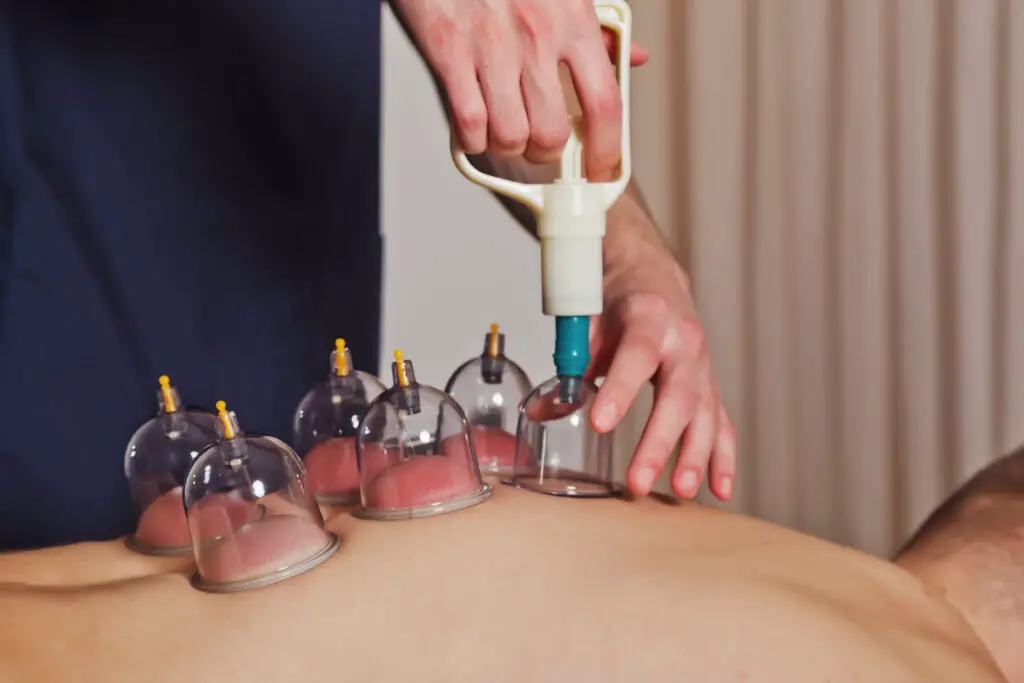
Cupping for Skin Health
Acne Treatment
Cupping therapy can be used as a complementary treatment for acne. By promoting blood circulation to the face, cupping can help reduce inflammation and support the body’s natural healing processes. It’s important to note that cupping should be performed by a trained practitioner when used for acne treatment.
Cellulite Reduction
Cellulite is a common concern, especially among women. Cupping therapy can be used to improve the appearance of cellulite by stimulating blood flow and promoting the breakdown of fat deposits. Regular cupping sessions, in combination with a healthy lifestyle, may lead to smoother skin.
Scar Healing
Cupping therapy can aid in scar healing by promoting blood flow to the affected area. The increased circulation can help break down scar tissue and encourage the development of healthier skin.
Cupping and Blood Circulation
Enhancing Oxygen Flow
Cupping therapy enhances blood circulation, which, in turn, improves the delivery of oxygen to cells and tissues. This increased oxygen flow can boost energy levels and overall vitality.
Reducing Inflammation
Inflammation is a common factor in various health conditions. Cupping therapy is effective in reducing inflammation by promoting the movement of white blood cells to the affected areas. This helps the body’s natural healing processes and can alleviate pain and discomfort.
Blood Pressure Regulation
For individuals with high blood pressure, cupping therapy may offer benefits. The therapy can help relax the nervous system and promote a sense of calm, which can contribute to lower blood pressure levels over time.
Detoxification with Cupping Therapy
Eliminating Toxins
Cupping therapy is believed to aid in the elimination of toxins from the body. The suction created by the cups stimulates the lymphatic system, which plays a crucial role in removing waste products and toxins from the body.
Supporting the Lymphatic System
The lymphatic system is responsible for maintaining fluid balance and removing waste products from the body. Cupping therapy supports the lymphatic system’s function, ensuring that it operates efficiently.
Kidney and Liver Health
Cupping can have a positive impact on the health of the kidneys and liver, two essential organs responsible for detoxification. By aiding in the elimination of toxins and promoting overall well-being, cupping therapy can support these vital organs.
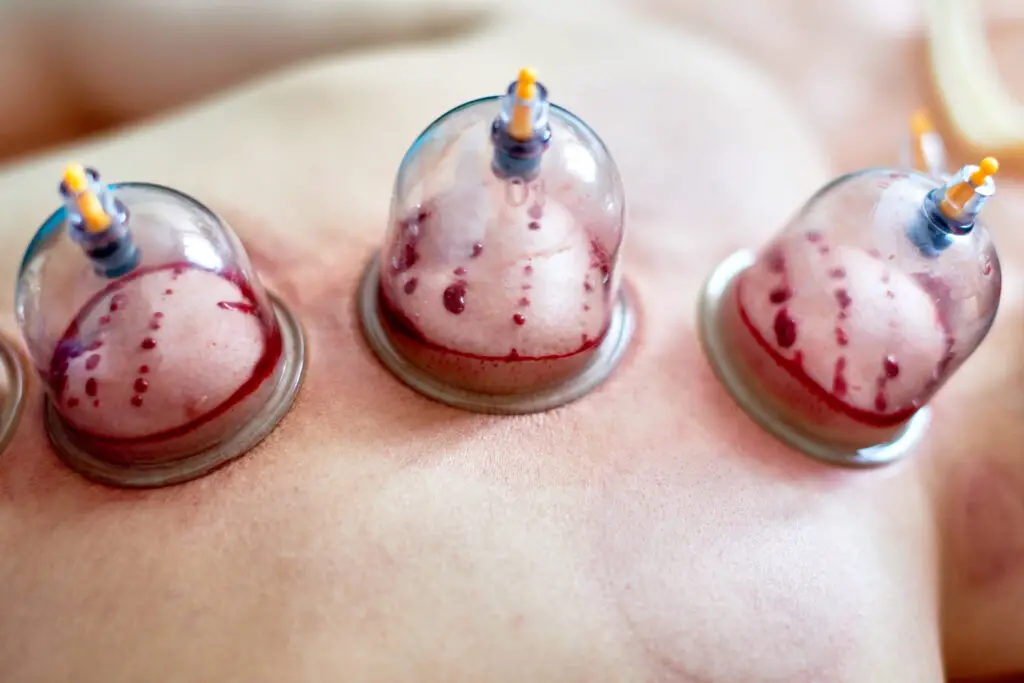
Cupping and Stress Reduction
Relaxation and Anxiety Management
Cupping therapy offers a unique opportunity for relaxation and anxiety management. The gentle suction and soothing sensation can help calm the nervous system and alleviate stress and anxiety.
Mental Well-being
Cupping therapy doesn’t just benefit the body; it also has a positive impact on the mind. Many individuals find that cupping sessions provide a sense of mental clarity and well-being. This can be attributed to the therapy’s calming effect on the nervous system.
Cupping for Respiratory Health
Asthma Management
Asthma is a respiratory condition that can be challenging to manage. Cupping therapy, in combination with other treatments, may help alleviate the symptoms of asthma by promoting better lung function and reducing inflammation.
Cough and Cold Relief
Cupping can be a soothing treatment for individuals dealing with coughs and colds. The therapy helps improve blood circulation and may reduce the severity and duration of these common ailments.
Combining Cupping with Other Therapies
Acupuncture and Cupping
Many individuals choose to combine acupuncture and cupping for a more comprehensive treatment approach. The two therapies complement each other, with acupuncture targeting specific energy points and cupping promoting overall relaxation and wellness.
Massage and Cupping
Cupping therapy can also be integrated into massage sessions. The combination of massage and cupping can provide deep relaxation, relieve muscle tension, and enhance the overall massage experience.
Cupping and Aromatherapy
Aromatherapy, with its use of essential oils, can be combined with cupping for a sensory and therapeutic experience. The calming scents of essential oils, coupled with cupping’s soothing sensation, can create a holistic approach to well-being.
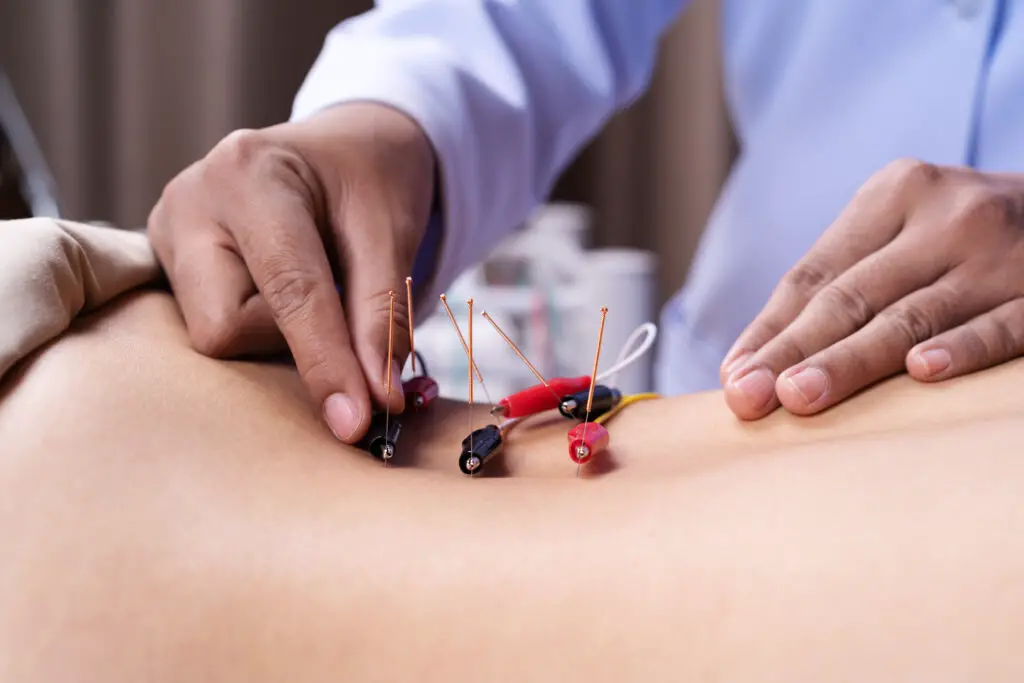
Safety and Side Effects
Skin Discoloration
One of the common side effects of cupping therapy is skin discoloration. After a cupping session, it’s typical to notice circular marks on the skin. These marks are not bruises, as they result from the suction of the cups and the release of toxins and stagnant blood. While they may appear alarming, these marks are usually painless and tend to fade within a few days to a couple of weeks.
Bruising
Bruising is another potential side effect, particularly if the cups are left in one place for an extended period. The bruising is typically mild and should not cause significant discomfort. It’s essential to communicate with your cupping practitioner if you have concerns about the appearance of bruises.
Infection Risk
Infection risk is a concern primarily with wet cupping, which involves making small incisions on the skin. To mitigate this risk, it’s crucial to ensure that your practitioner uses sterile equipment and follows proper hygiene protocols. Infection is a rare complication but should not be overlooked.
Cupping Therapy: Who Should Avoid It
Certain Medical Conditions
While cupping therapy offers numerous benefits, it may not be suitable for everyone, especially those with specific medical conditions. People with bleeding disorders, skin conditions, or certain medical contraindications should consult with a healthcare professional before undergoing cupping therapy.
Pregnancy and Cupping
Pregnant individuals should exercise caution when considering cupping therapy. While cupping can be safe during pregnancy, it’s crucial to inform your practitioner if you are expecting, as certain areas of the body should be avoided. Always seek the guidance of a qualified practitioner experienced in prenatal cupping.
Children and Cupping
Cupping is generally considered safe for children when administered by a qualified practitioner who specializes in pediatric cupping. It can be particularly useful for addressing respiratory issues and promoting overall well-being in children. However, parental consent and supervision are essential.
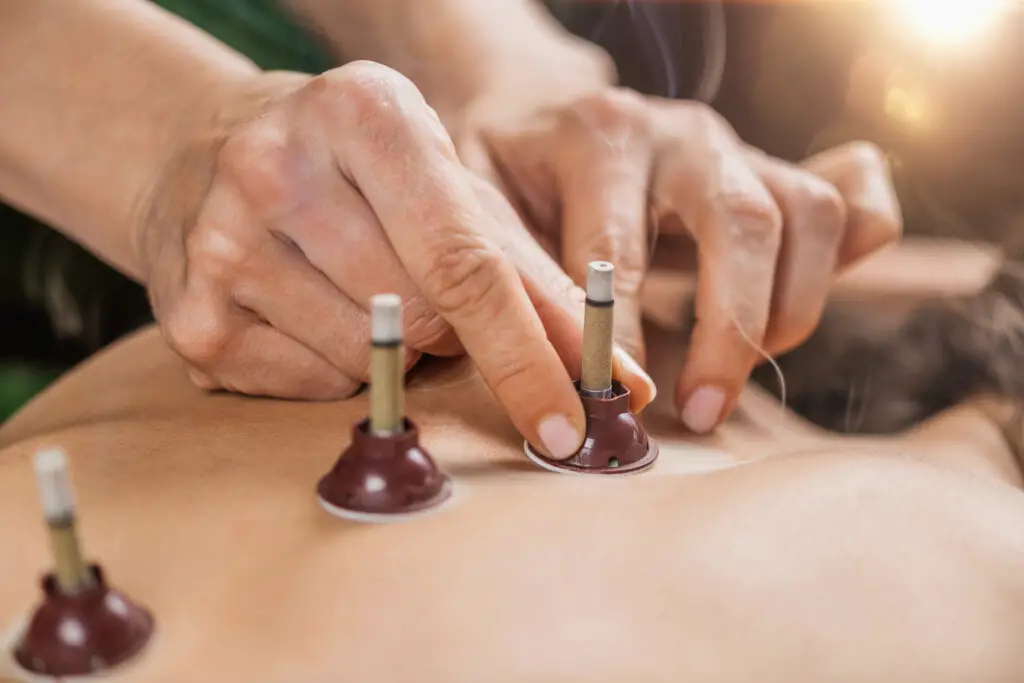
Cupping Across Cultures
Chinese Medicine
In traditional Chinese medicine, cupping is an integral part of the healing process. It is used to balance the body’s vital energy, or “qi,” and promote overall health. Chinese cupping techniques often involve the use of glass cups and are a common sight in acupuncture clinics.
Middle Eastern and Islamic Traditions
Cupping, known as “hijama,” has a significant presence in Middle Eastern and Islamic traditions. It is often performed for both therapeutic and spiritual purposes. Hijama practitioners are skilled in the art of wet cupping, where small incisions are made to release blood and toxins.
Cupping in Europe and North America
In recent years, cupping therapy has gained popularity in Europe and North America. While it was relatively unknown in these regions, high-profile endorsements and growing interest in holistic health practices have contributed to its widespread adoption. Cupping is now offered in many wellness and alternative therapy centers.
Research and Scientific Evidence
Clinical Studies
The efficacy of cupping therapy is a subject of ongoing research. Many clinical studies have examined the therapeutic potential of cupping for various conditions, including pain management, skin health, and respiratory issues. While research is promising, more extensive and rigorous studies are needed to establish definitive conclusions.
The Placebo Effect
Skeptics often question the effectiveness of cupping therapy, attributing its benefits to the placebo effect. While the psychological component of any therapy should not be underestimated, it’s essential to recognize that cupping’s physiological effects, such as improved blood circulation and relaxation, are well-documented.
Skepticism vs. Advocacy
Cupping therapy remains a topic of debate in the medical and scientific communities. While some healthcare professionals are skeptical of its benefits, others advocate for its use, especially in conjunction with conventional treatments. Ultimately, the decision to try cupping should be based on individual preferences and consultation with a healthcare provider.
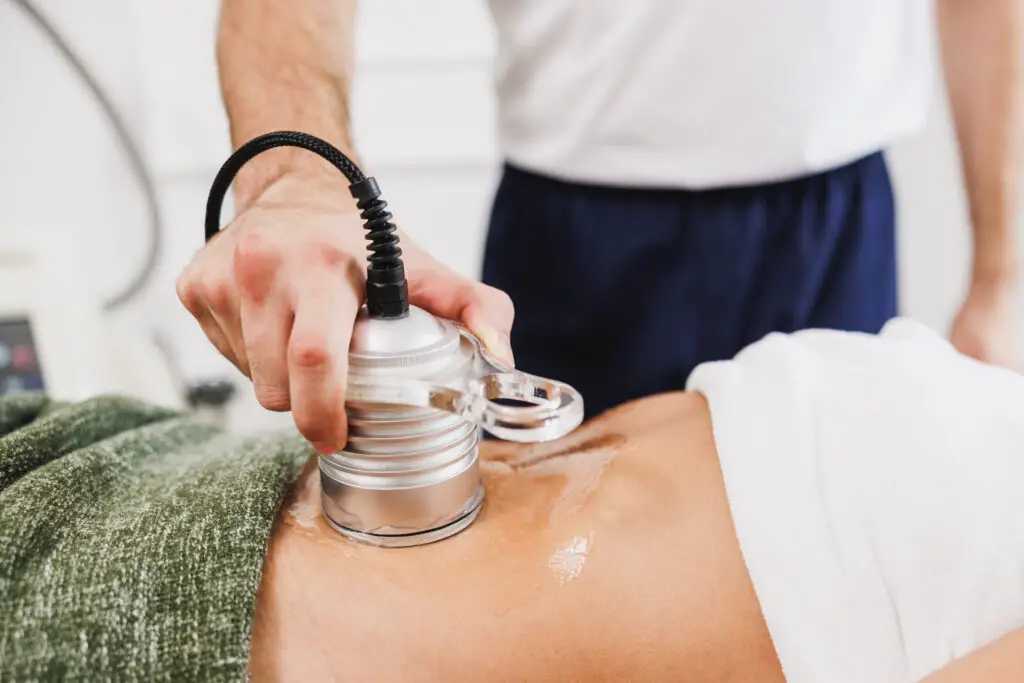
Getting Started with Cupping
Seeking a Professional Practitioner
If you are considering cupping therapy, it is advisable to seek a qualified and experienced practitioner. Look for professionals with certification or training in cupping techniques. A skilled practitioner will ensure that the therapy is administered safely and effectively.
At-Home Cupping Kits
For individuals interested in self-administered cupping, at-home cupping kits are available. These kits typically include silicone or plastic cups and a pump to create suction. It’s essential to follow the provided instructions and take precautions to prevent injury.
Understanding Cupping Marks
Cupping marks, also known as “sha,” are a common outcome of cupping therapy. These marks can vary in color and intensity, with some appearing as light pink or red and others as dark purple. The marks are temporary and typically fade within a few days to a couple of weeks.
The Experience of Cupping
What to Expect During a Session
During a cupping session, you can expect the practitioner to place cups on specific areas of your body. These cups will create a suction effect, which may feel like a tight or pulling sensation. The cups are typically left in place for several minutes, and the therapist may move them to target different areas.
Post-Cupping Care
After a cupping session, it’s important to follow specific care instructions. Keep the cupped area clean and avoid exposing it to extreme temperatures or direct sunlight. Staying hydrated can also help facilitate the body’s natural detoxification processes.
Myths and Misconceptions About Cupping
Cupping and Rituals
One common misconception about cupping therapy is that it is purely a ritualistic or spiritual practice. While it does have cultural and symbolic significance in some traditions, its therapeutic benefits are grounded in physiological effects.
Cupping and Bloodletting
Some people equate cupping with bloodletting, a historical practice with distinct purposes. Cupping, even wet cupping, does not aim to remove large amounts of blood from the body. It is more focused on stimulating circulation and promoting overall well-being.
Cupping as a Cure-All
Cupping therapy is not a cure-all, despite its wide range of benefits. While it can be a valuable component of a holistic wellness routine, it should not replace conventional medical treatments for specific health conditions.
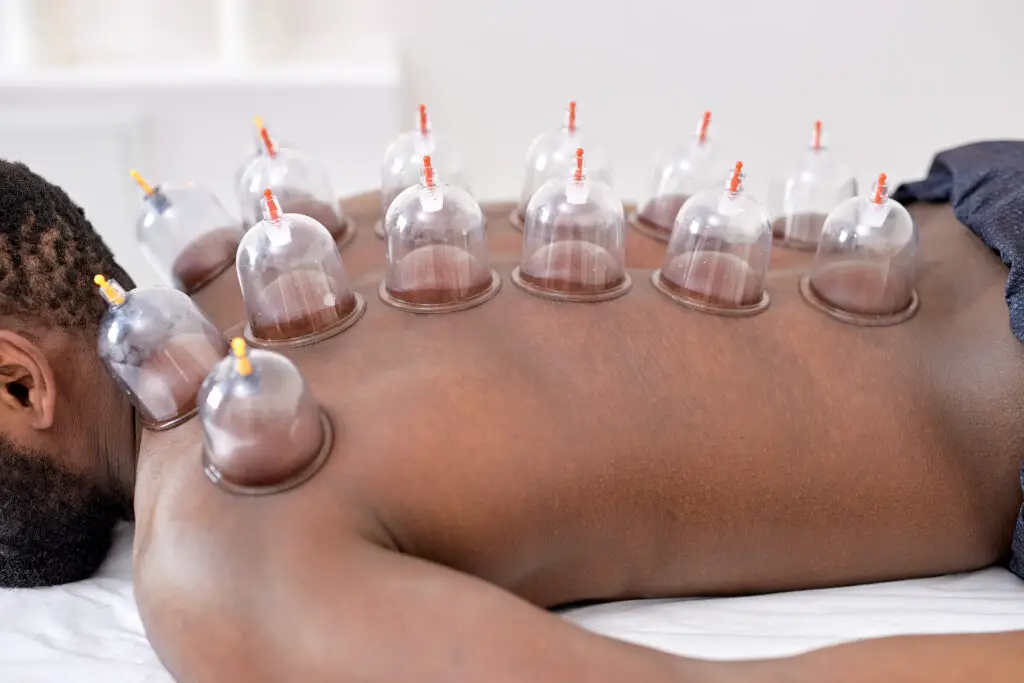
Embracing the Therapeutic Potential of Cupping
Cupping therapy, with its long history and diverse benefits, offers a unique approach to health and well-being. Whether you seek pain relief, improved circulation, stress reduction, or support for specific health issues, cupping can be a valuable addition to your wellness routine. As with any therapeutic practice, it is essential to consult with a qualified practitioner and consider your individual needs and preferences.
Conclusion:
Cupping therapy is a holistic and time-tested approach to health and wellness. With its ability to alleviate pain, promote blood circulation, support detoxification, and enhance relaxation, cupping offers a wide range of benefits. As this practice continues to gain recognition and acceptance in modern healthcare, it provides an excellent complement to conventional treatments and a path to overall well-being.
If you’re considering cupping therapy, it’s essential to seek a qualified practitioner and communicate your specific needs and concerns. Cupping can be a valuable addition to your wellness routine, offering a holistic approach to health and balance.
https://www.youtube.com/watch?v=YrMdSq4sSKI
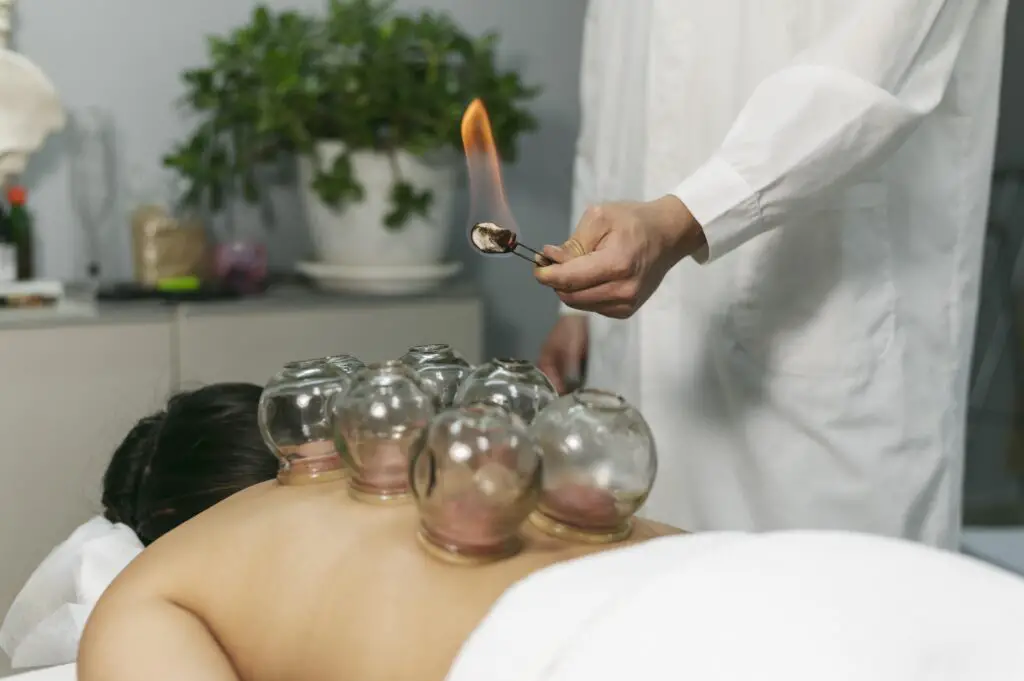
Frequently Asked Questions (FAQs):
- What is cupping therapy, and how it functions?
Cupping therapy is an alternative therapy that involves placing cups on the skin to create suction. This suction promotes blood flow and can have various therapeutic benefits, such as pain relief and improved circulation. - Are the marks left by cupping therapy bruises?
The marks that result from cupping therapy are different from bruises. They are typically painless and result from the suction of the cups. These marks, known as “sha,” indicate the release of toxins and stagnant blood and typically fade within a few days to a couple of weeks. - Is cupping therapy safe?
Cupping therapy is generally safe when administered by trained professionals. However, there are some potential side effects, such as skin discoloration and bruising. Infection risk is a concern primarily with wet cupping, so it’s essential to ensure sterile equipment and proper hygiene protocols. - Who can benefit from cupping therapy?
Cupping therapy offers a wide range of benefits and can be beneficial for individuals seeking pain relief, improved blood circulation, stress reduction, or support for specific health issues. However, it may not be suitable for everyone, especially those with certain medical conditions. Consultation with a healthcare professional is advised. - Can pregnant individuals undergo cupping therapy?
Pregnant individuals can undergo cupping therapy, but caution is necessary. It’s crucial to inform the practitioner about the pregnancy, as certain body areas should be avoided. Seek the guidance of a qualified practitioner experienced in prenatal cupping. - Is cupping therapy a cure-all for health issues?
Cupping therapy offers a wide range of benefits but should not be viewed as a cure-all for health problems. It is a valuable addition to a holistic wellness routine but should not replace conventional medical treatments for specific conditions. - How can I locate a certified cupping therapy practitioner?
To find a qualified cupping therapy practitioner, look for professionals with certification or training in cupping techniques. Seek recommendations, read reviews, and ensure that the practitioner follows hygiene and safety protocols. - Is cupping therapy supported by scientific evidence?
Cupping therapy is a subject of ongoing research, with many clinical studies exploring its therapeutic potential. While more extensive research is needed to establish definitive conclusions, there is scientific evidence supporting its physiological effects, such as improved blood circulation and relaxation. - What can I expect during a cupping session?
During a cupping session, the practitioner will place cups on specific areas of your body, creating a suction effect. This may feel like a tight or pulling sensation. The cups are typically left in place for several minutes, and the therapist may move them to target different areas. - Is it safe to use at-home cupping kits?
At-home cupping kits can be safe if used with caution and following the provided instructions. These kits typically include silicone or plastic cups and a pump to create suction. It’s essential to take precautions to prevent injury and communicate with a healthcare professional if you have concerns. - Is cupping therapy just a traditional or ritualistic practice?
Cupping therapy has cultural and historical significance in various traditions, but its therapeutic benefits are grounded in physiological effects. It’s not merely a ritualistic practice but a holistic approach to well-being. - What should I do to care for the cupping marks on my skin?
To care for cupping marks, keep the cupped area clean and avoid exposing it to extreme temperatures or direct sunlight. Staying hydrated can help facilitate the body’s natural detoxification processes, contributing to the marks fading within a few days to a couple of weeks.
